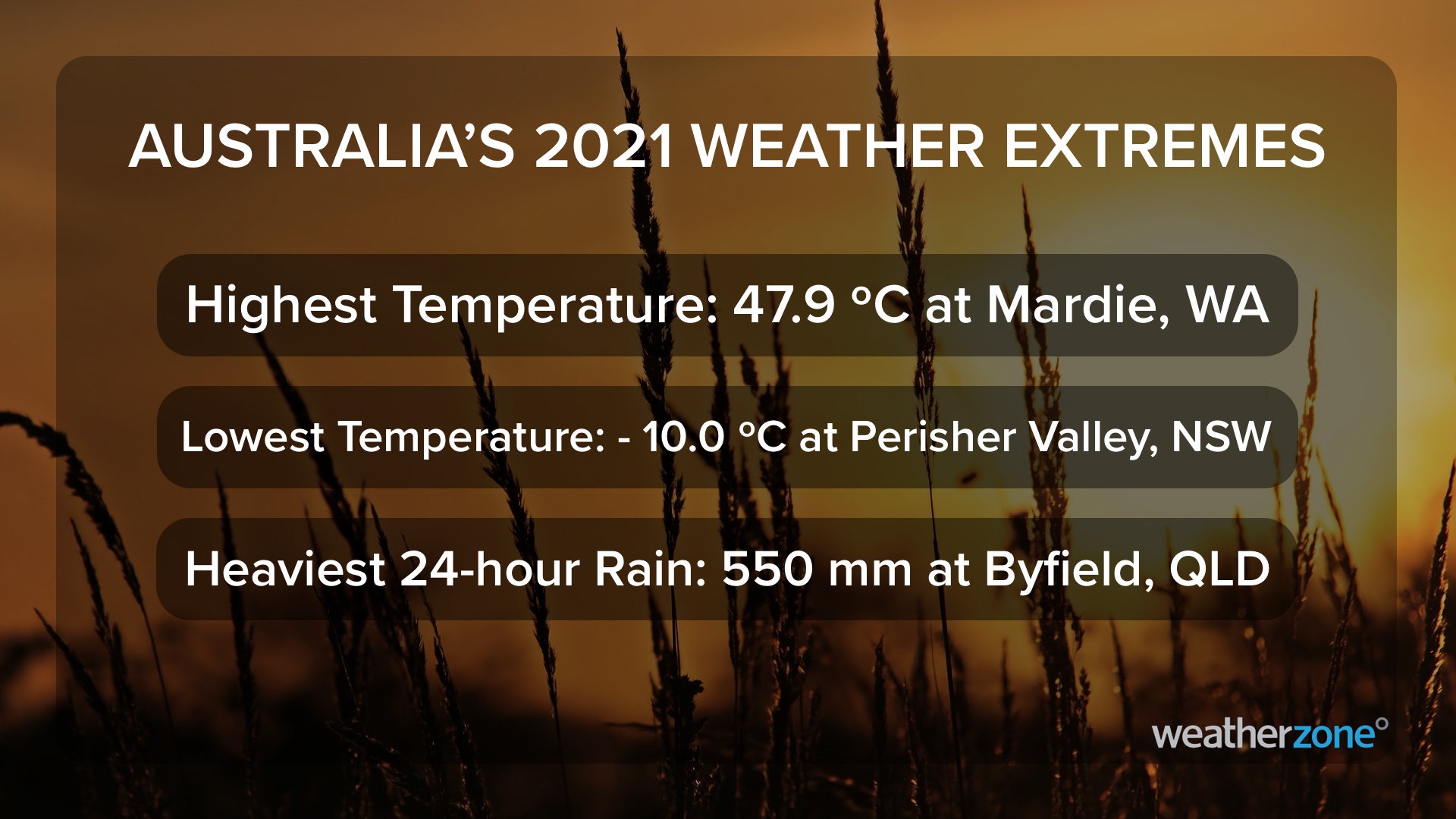Australia's weather extremes in 2021
As the year draws to a close, it's time to take a look back at which parts of Australia experienced the most extreme weather in 2021.
While COVID continued to disrupt daily life across Australia in 2021, our national network of weather stations and rain gauges continued to operate without interruption.
Hottest
Back-to-back La Niña events helped take the sting out of Australia's heat during the last two summers, at least in some parts of the country. But this is still Australia, a vast land that produces exceptionally hot weather.
The highest temperature recorded in Australia during 2021 was 47.9ºC at Mardie, WA on December 20. Several other locations also exceeded 47ºC, including Mandora, Port Hedland and Roebourne.
This year's hottest day was about three degrees off the kind of extreme heat Australia has produced in the past, with the national record currently standing at 50.7ºC from Oodnadatta, SA on January 2, 1960.
Coldest
The lowest temperature of the year was minus 10ºC at Perisher Valley, NSW on July 7.
This type of cold weather isn't all that remarkable for the Snowy Mountains in winter. In fact, it's a whopping 13ºC warmer than Australia’s lowest temperature on record, which was minus 23.0ºC at Charlotte Pass, NSW on June 29, 1994.

Wettest
A lot of rain fell over Australia in 2021 as a result of La Niña, especially towards the end of the year. The country as a whole had its wettest November in 122 years of records.
Based on 24-hour rainfall, the wettest place in Australia during 2021 was a rain gauge near Byfield, QLD, which registered 550mm during the 24 hours to 9am on March 17. No other location in the country saw half a metre of rain in a single day during 2021.